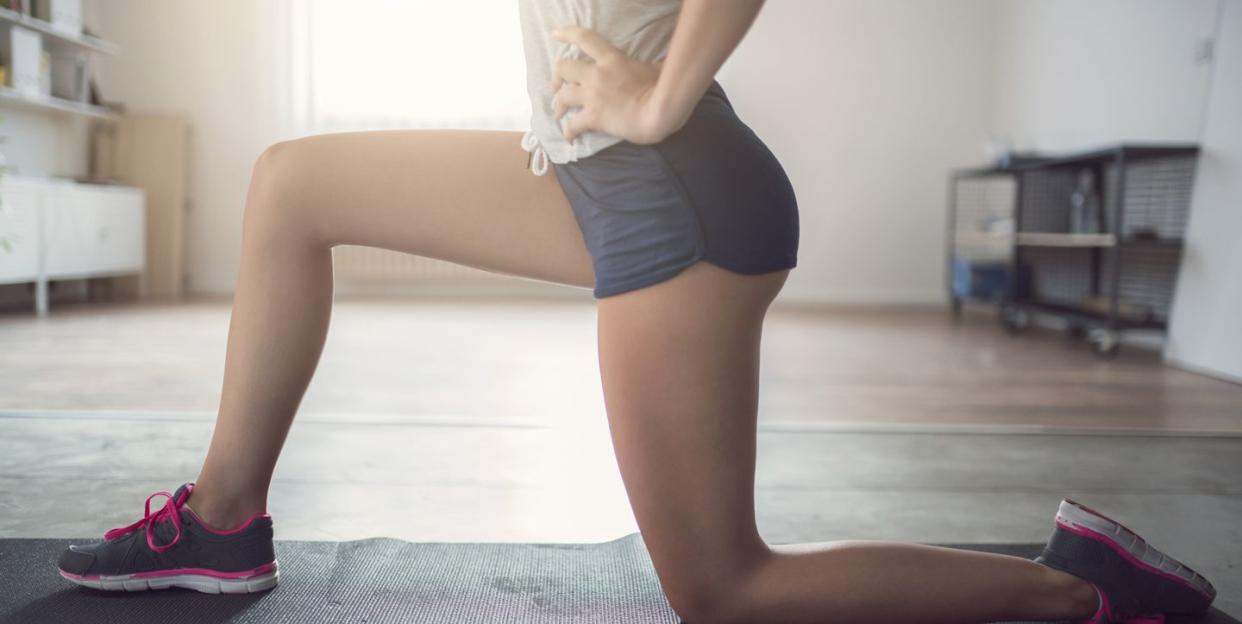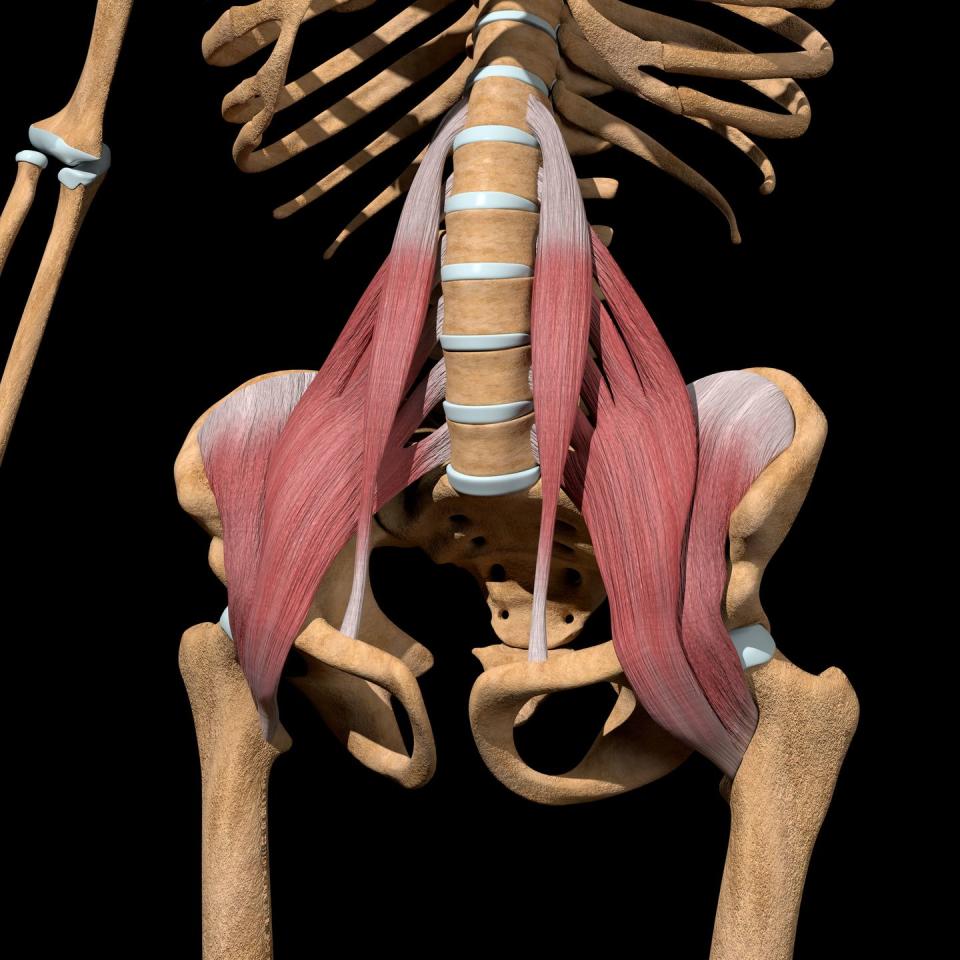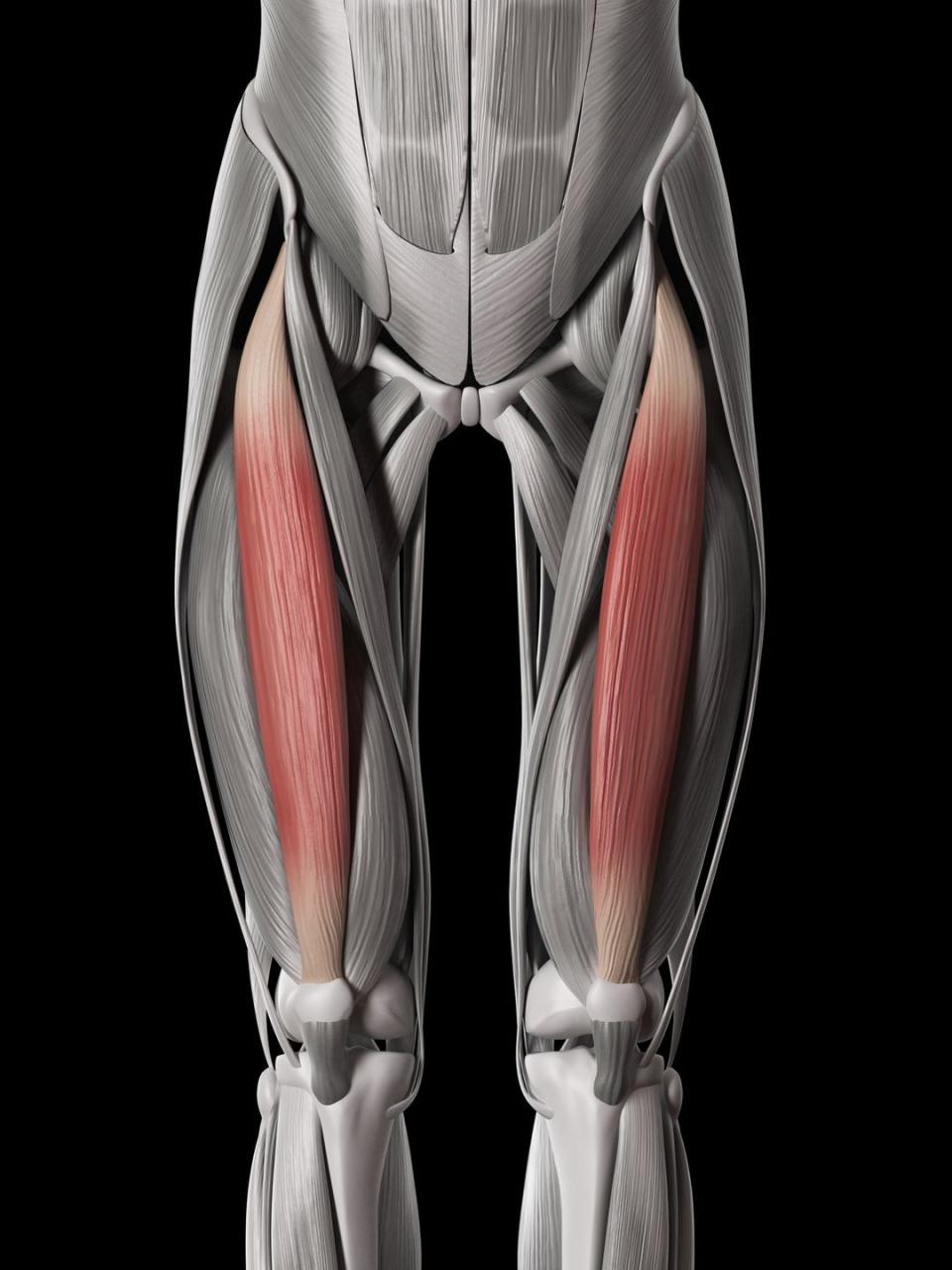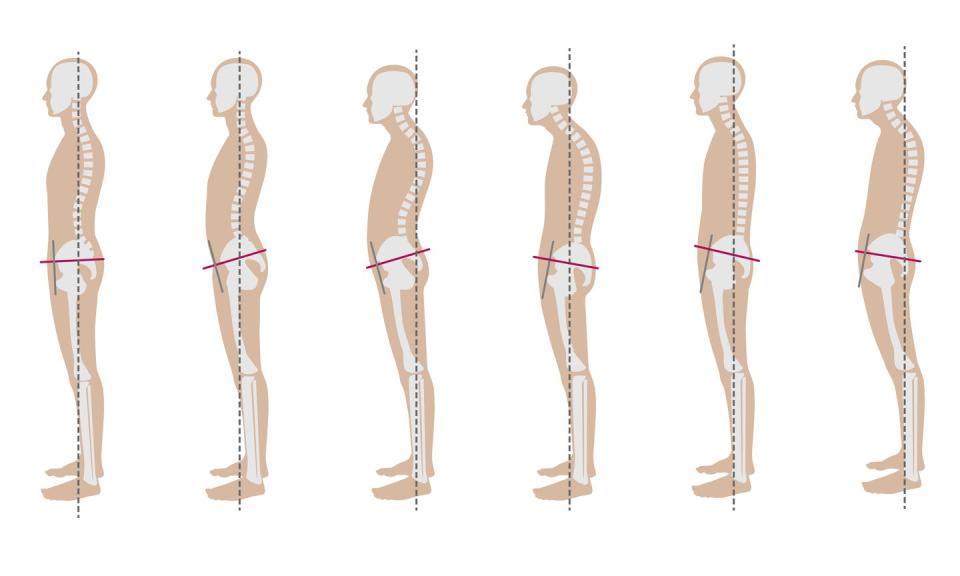Hip flexor exercises: your complete guide

If you have tight hips, you'll know. A nagging tension and stiffness causing serious discomfort and limited mobility, and perhaps even accompanied by lower-back pain and hamstring pain, tight and weak hip flexors are just more physical collateral damage that are a result of being sedentary all day, every day.
As the workhorses that are integral to so many functional, everyday movements, from walking to running and even to the simplest act of standing up, your hip flexor muscles are still usually overlooked in our time-poor schedules, as they're not quite glamorous as your glutes, nor as hyped-up as your hamstrings.
But if search-engine traffic is anything to go by - 3.6k of you are Googling 'hip flexor exercises' monthly - this clique of pelvic-hip linkers just might be stepping into the spotlight. WH spoke to Ultimate Performance's Senior Personal Trainer Aroosha Nekoman to strengthen these key muscles and banish tight and weak hips.
What is your hip?
Technically, your hip is the ball-and-socket joint comprising your thigh bone (femur) and hip bone (pelvis). Rotating your hip outwards, or externally, means turning your leg out away from your body.
What are your hip flexors?
'The hip flexors are a group of muscles in your hips and thighs. Their primary responsibility is to enable you to bring your knees closer to your chest,' says Nekonam.
They are found towards the front of the hip, and constitute five key muscles:
the psoas major (a muscle lying close to either side of the spine and that extends to the bottom of the pelvis)
iliacus (a triangular, flat muscle that fits into the curved surface of the largest pelvic bone) - together with the psoas major and psoas minor, it forms the iliopsoas muscle, responsible for externally rotating your hip
the rectus femoris (the only muscle in the quadriceps group that crosses your hip, this muscle runs straight down the middle of your thigh)
pectineus (one of the muscles at the front of the upper, inner thigh)
sartorius (the longest muscle in the human body, this thin and long muscle runs down and across the front of your thigh)


'The hip flexors are crucial in stabilising your hip and knee joints and enabling motion,' says Nekoman. They work together with other muscles such as:
the hip extensors (the muscles driving your hips forwards, such as the hamstrings and glute maximus);
the hip adductors (the muscles running down the inside of the leg that bring your femur (thigh bone) towards the midline of the body, also known as adduction);
and the hip abductors (the muscles that draw the femur away from the midline of the body, also known as abduction, e.g. the glutes, piriformis, tensor fasciae latae (TFL))
Which movements use your hip flexors?
'Typically, movements that involve hip flexion and/or knee extension (straightening) will work your hip flexors, such as the quads, adductors, and abductors, e.g., a squat variation such as the split squat, leg press, or leg extension.
'Every time you take a step forward or run, you’re using your hip flexors. Even standing up requires your hip flexors to keep you stable,' explains Nekonam. A study showed that strengthening your hip flexors improved walking ability as measured by step length, stride length and walking speed. When you do your highest forward kick, that's when hip flexion is greatest.
Symptoms of weak hip flexors
Tight and weak hip flexors can cause lower-back pain and affect your posture.'Today, posture-related problems are increasing because we spend more time seated. You’re in a state of hip flexion for many hours, so your hip flexor muscles, specifically your psoas and rectus femoris, will be in an extended shortened position,' says Nekonam.
These tight muscles can pull the front of your pelvis down into an forward position, while the back of your pelvis rises, causing your spine to curve - it may look like your belly and glutes are sticking out. This is known as anterior pelvic tilt.

'When these muscles become too taut, it becomes difficult for your hamstrings and glutes to fire effectively when you perform moves such as deadlifts, hip thrusts, and back extensions,' continues Nekoman. As a result, your back overcompensates, putting too much pressure on those and potentially leading to injuries such as lower-back pain.
Hip flexors therefore play a pivotal role in stabilising your lower spine and ensuring good posture.
What are the best hip flexor exercises for strengthening your hip flexors?
Here are some exercises you can incorporate into your routine that strengthen and stretch your hip flexors:
1. Walking lunges
Targets: quads, glutes, hamstrings, calves, abs, hips
Lunges improve lower-body strength, balance, and mobility. They'll also help you with everyday tasks such as walking, running, or picking up the kids.
Start by standing straight, with a dumbbell in each hand if you want
Your feet should be hip-width apart, your chest up, and your core engaged.
With one leg, take a big step forward, making sure your foot is in line with your hip, your knee directly over your foot. Lower down under control until both your knees are bent at 90° and your front thigh is parallel to the floor.
Push through the front foot, engaging your quad and hamstring, and bring your back foot forwards stepping straight into another forward step. Repeat on the other side.
Tip: To increase the emphasis on your glutes, lean your torso forward over the front leg and hold your dumbbells closer to the knee (if using dumbbells).
Regression: bring your feet together between each rep rather than stepping straight into the next lunge.
2. Straight-leg raises
Targets
When raising your legs: the iliopsoas, tensor fasciae latae, and rectus femoris
When raising your pelvis: the abdominal core - mainly the rectus abdominis (your 'six pack' muscles) when raising the pelvis and rolling up the spine.
It is a good exercise if you have trouble engaging your lower abdominal muscles.
Lie on your back with your legs straight and together and your hands by your sides.
Press your lower back into the floor and lift both legs up so that they are just above the floor. This is the start and end position for each rep.
Bracing your core and keeping your legs straight, slowly lift them all the way up to the ceiling until your hips come off the floor.
Slowly lower your legs back down until they are just above the floor. Pause for a second and repeat.
Tip: In order for your abs to be fully engaged, your lower back should remain in contact with the floor throughout this movement. Avoid using momentum to carry out this exercise: movements should be slow and controlled with your abs engaged throughout.
Regression: Try lifting your hips up by placing your hands underneath your hips, having a slight bend in the knees or reducing the range of motion, so that you only lower your legs to the point where your lower back remains in contact with the floor. A good variation is to perform alternative leg flutters.
3. Glute bridge
Targets: hip flexors, glutes, hamstrings, pelvis
Bridging is easy and effective, which makes it a really good move to incorporate into your arsenal. Perform this exercise in long sets, making sure to contract the muscles at the top of the lift, when the pelvis is off the ground.
Lie on your back with your hands flat on the ground, arms alongside your body and knee bent.
Inhale and lift the buttocks off the ground, pushing down through the feet.
Maintain the position for a couple of seconds and lower the pelvis without touching the buttocks to the ground.
Exhale and begin again.
4. Squat
Targets: hip flexors, glutes, adductors, hamstrings, core
A staple of any lower-body workout, the squat is a compound move, working several muscle groups at the same time. It will improve your posture (providing you can get your spine in the right position), your lower-body strength and your stability. A study led by the University of Hartford found that an eight-week low-intensity squat-training programme improved both knee and hip flexion and extension strength.
Stand up with your feet about hip-width apart.
With your back straight and core engaged, sit the hips back and bend your knees to lower down into the squat position. If using dumbbells, rack them on the front of your shoulders, or if using a barbell, rest it lightly on your upper traps and shoulders.
Keeping the weight in the heels, push the floor away to straighten your knees and drive the hips back to the starting position. Keep your abs engaged throughout and your chest up.
Squeeze your glutes at the top of the squat, then repeat.
Tip: The set up of a squat will depend on your limb length and range of motion. You should be aiming to squat parallel or lower. Keep tension in the legs throughout the set by not locking out at the top of the squat. Keep your bodyweight distributed evenly between both feet.
5. Sit ups
Targets: abdominals (particularly the obliques, your side abs), hip flexors
If you have weak hip flexors, you may find yourself using your hips too much when you’re sitting up, rather than focusing on using your abdominal muscles to contract your body. Really try to focus on using your abs to perform the sit-up motion, and gradually you will build up greater strength and flexibility in your hips.
Lie on your back with your knees bent, feet flat on the ground, and hands behind the head.
Inhale and raise the torso by rounding the back. Exhale at the end of the movement.
Return to the initial position without touching the ground.
Continue until a burn develops in the abdominal muscles.
6. Russian kettlebell swing
Targets: a full- body movement that works your entire posterior chain (lower-back muscles, glutes, hamstrings), hip flexors, chest, shoulders
Stand with your feet shoulder-width apart and squat down to pick up the kettlebell with both hands in an overhand grip.
Look ahead, not down, and keep your spine aligned and your knees slightly bent throughout the movement.
Drive your pelvis forward to swing the kettlebell out and up to shoulder height.
Allow the weight to drop back down, hingeing at the hips as it swings between your legs.
7. Mountain climbers
Targets: shoulders, triceps, glutes, hip flexors. hamstrings, core
Get into a high plank position making sure to distribute your weight evenly between your hands and your toes.
Check your form. Hands should be about shoulder-width apart, your back should be back flat, your core engaged and your head in alignment.
Pull your right knee into your chest as far as you can.
Switch legs, pulling one knee out and bringing the other knee in.
Keep your hips down and run your knees in and out as far and as fast as you can. Alternate inhaling and exhaling with each leg change.
How often should you do hip flexor exercises?
'For exercises that strengthen your hip flexors, you can include them in your programmes two to three times a week,' says WH fitness writer and personal trainer, Kate Neudecker.
'The key is to allow enough rest in between workouts for your muscles to repair, recover and adapt. In doing so, you will notice an improvement in your strength levels; then tweak your programme to increase reps, sets or weights used. As long as you are consistently including progressive overload at a pace that suits your body and preferences, you will see the results you're working for,' she continues.
A study in Knee Surgery, Sports Traumatology, Arthroscopy looked at the effect of a six-week hip-flexor training programme using elastic bands for resistance, three times a week for 10 minutes.
The strength-training stimulus of the band increased from a resistance that participants could perform 15 repetitions with (first week) to one they could perform eight repetitions with (sixth week). The results showed a substantial increase in strength of the hip-flexor muscles, with an average change of 0.34 newton metres per kilogram. So you don't need to be spending hours on these movements, either.
Does walking strengthen hip flexors?
'Yes, especially walking uphill' says Neudecker. 'Walking strengthens your hip flexors and also keeps them mobile. If you've been sat down for long periods of time, a brisk walk can help keep them loose, but will also gently strengthen them if that's your goal.'
What is an example of a hip flexor workout?
This is a great lower-body workout that incorporates a lot of hip-flexor strength and conditioning exercises.
Perform between two and five rounds of the following six exercises, with no rest between exercises, and resting 60-120 seconds between rounds.
As your fitness increases, you can add barbells or dumbbells to make it progressively more challenging.
You can do this routine anywhere: the gym or any room with enough floor space.
Plank to press-up – 5-10 reps
Forward lunges – 10-15 reps per leg.
Mountain climbers – 10-12 reps per leg
Super slow squats – 8-10 reps
Sit-ups – 10-12 reps
Glute bridges – 8-10 reps
Want a stronger lower body and core?
Become a member of the Women's Health Collective and get full access to the Women's Health app, available to download on Google Play and the App Store, to get the latest workouts and fitness content.
You Might Also Like


